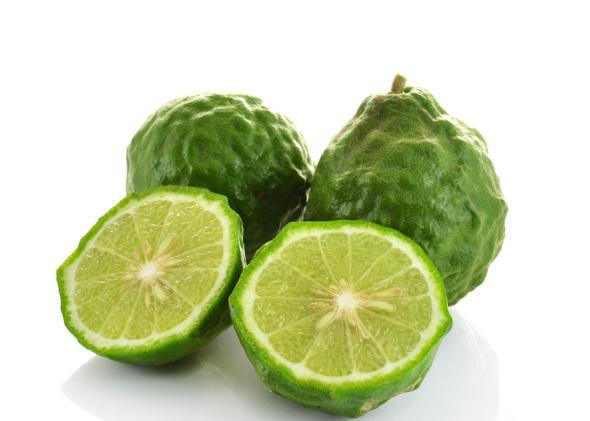If you’re an American, you might not flinch when you hear a certain bumpy green citrus fruit referred to as a kaffir lime. But in many parts of the world—most notably South Africa—the common moniker for the fruit, best known as an ingredient in Southeast Asian cooking, sounds heinously offensive. As Veronica Vinje recently pointed out on Straight.com, kaffir is “a horrible racial epithet, akin to using the N-word in North America.”
So why are these limes called by that name? The K-word has a long, complex history, but how it came to refer to a type of citrus fruit is a bit murky. The Arabic word kafir was originally used to refer to non-Muslims, but over the centuries it was adopted by white colonialists to describe black Africans. By the 20th century, kaffir was widely understood to be a slur, and its power to insult and offend only grew in apartheid-era South Africa, so much so that its use became legally actionable. In Sri Lanka, an ethnic group called the Kaffirs retained a neutral understanding of the word, but everywhere else, the epithet is as injurious as they come.
Does the term kaffir lime come from the racial slur, or from the Sri Lankan Kaffirs—or from somewhere else entirely? Vinje, and many other writers who have decried the term kaffir lime, have assumed that kaffir limes are called that because they’re associated in some way with southern Africa. Vinje cites the work of food writer Mick Vann, who has claimed on his blog that the term kaffir lime “referred to the Indian, Asian, and Indonesian workers that used the leaf in their cooking and came to South Africa seeking jobs.” This seems unlikely, given that the K-word was used in South Africa to refer specifically to black Africans, not to other people of color. (White colonialists came up with different slurs for Indians, Asians, and Indonesians.)
Others have speculated that the name is a reference to the supposed resemblance between the lime and the ethnic groups slurred by the K-word. Cookbook author and blogger Garrett McCord has written:
Much like the Brazil nuts, racially nicked named [sic] “nigger toes” due to their dark color and their—to some—unappealing appearance when in the shell, the kaffir lime is similarly named to reflect attitudes towards a certain group of people. Kaffir limes are bulgy, mottled, and supposedly not as pretty as the smooth and glossy skins of other varieties of lime such as the silver or Persian lime. From this was born the reference to the less aesthetically appearing lime as the “Kaffir lime.”
Despite the simplicity and intuitive appeal of these somewhat conflicting theories (I’ve asked Vann and McCord about their sources, but I’ve yet to hear back), the etymology of the term kaffir lime is more complicated, and worse documented, than they imply. According to lexicographer John Ayto in his thorough, fascinating Diner’s Dictionary, the term kaffir lime does not appear to be linked to other southern African terms like kaffir cattle, kaffir orange, and kaffir plum, which makes sense given that the fruit is not from Africa. He also notes that it is not included in the authoritative Dictionary of South African English.
As it happens, the very earliest written instance of kaffir lime yet to be uncovered suggests that the word’s origins have nothing to do with the South African slur.* As the Oxford English Dictionary points out, Scottish botanist H.F. Macmillan used the term in his 1910 Handbook of Tropical Gardening and Planting to refer to a lime found in Sri Lanka, the home of the ethnic group that refer to themselves proudly as the Kaffirs. Macmillan lived there for 30 years, and it was there that he wrote his botanical handbook. It is difficult to say how he, and the other people he heard using the term kaffir lime, understood the connotation of the word, but it seems at least possible that the name began innocuously. Given that the earliest evidence of the lime’s name comes from Sri Lanka, lexicographer Jesse Sheidlower told me, “It seems very likely that it comes from that particular strand.”
Given the paucity of written evidence, we might never know exactly where the name kaffir lime originated and in what spirit it was meant. However, we do know that today, throughout much of the world, the K-word is an abhorrent smear. Given that the name kaffir lime contains a word that hurts people and has a horrible past, I don’t intend to refer to the limes by that designation any longer.
Besides, there’s a non-offensive, sensible alternative: In Thailand, home of the cuisine that makes the best use of the limes and their leaves, they’re known as makrut limes. Why not call them that?
Update, July 7, 2014: University of California researcher David Karp has alerted me to an even earlier published instance of the name kaffir lime than H.F. Macmillan’s: In The Cultivated Oranges, Lemons Etc. of India and Ceylon, published in 1888, author Emanuel Bonavia briefly mentions the fruit, noting, “Europeans call it Caffre-lime.” (Caffre is an alternate spelling of the K-word.)
Karp and his colleague Cara De Silva have posited a different explanation for the name, speculating in 1998 in the food journal Petits Propos Culinaires, “Indian Muslims most likely encountered the fruit as an import from lands such as Thailand and Sri Lanka, where Buddhists and other non-Muslims predominated. … From this Indian usage, intended to convey otherness and exotic provenance, the term passed into English.” This theory suggests that the name’s roots lie closer to the original Arabic meaning of kafir than to the 20th-century racial slur, although of course the term’s potentially benign origins don’t invalidate modern-day concerns about the word’s offensiveness.
